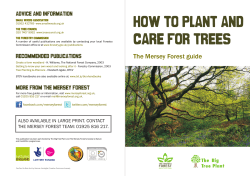
Persimmon
Persimmon Common names Origin Description Growth Habitat Foliage Persimmon, Oriental Persimmon, Japanese Persimmon, Kaki. The oriental persimmon is native to China. It spread to Korea and Japan many years ago and was introduced to California in the mid 1800's. Persimmon trees are broadly classified into two general categories: those that bear "astringent fruit" that can be eaten when they are ripe and jelly-soft and those that bear "non-astringent" fruits that can be eaten ripe while hard and crispy such as apples. Persimmon trees need strong sunlight and some breeze although some shade is tolerated. Trees grown in cooler areas however need protection from cooling breezes. They should not be grown alongside eucalyptus trees. Leaves can grow to 18cm long and 10cm wide. Initially pale, light yellow-green while young becoming dark, glossy green when mature. Tea can be made from fresh or dried leaves. Flowers Fruits Soil Pruning Fertilization Propagation Harvest Nutritional Properties Health Benefits Commercial Uses Female flowers are single and cream-colored while the pinktinged male flowers typically grow in threes. Many trees produce seedless fruit while pollinated trees produce fruit with seeds that may be larger with a different flavor and texture. Persimmons can withstand a wide range of conditions as long as the soil is not overly salty, but trees fare best in deep, well drained loam. A pH range of 6.5 to 7.5 is ideal. Persimmon trees have a strong tap root which may mean digging a deeper hole than usual when planting. Persimmon trees bear fruit on new growth so the best time for pruning is late winter or early spring so that buds are stimulated. Pruning can be done in early summer to slow down trees that are growing too large. Fertilize young trees in February and July with a balanced fertilizer. Persimmons usually begin bearing at two or three years. Beginning in the third year, fertilize only once in early spring. Use a low nitrogen mix to avoid fruit drop. Propagation of trees is primarily by seed, although root cuttings may be used. Improved varieties are obtained through grafting since persimmons do not reproduce “true” from seeds. Harvest the astringent varieties of persimmons when they are hard and fully colored. They can be left to soften on the tree but birds or animals might eat them. Astringent persimmons will continue to ripen off of the tree when they are kept at room temperature. Low in calories but rich in dietary fiber. They contain antioxidants, vitamin C, B-complex vitamins and minerals such as potassium, manganese, copper and phosphorous. Much like cherries, persimmons are abundant in a variety of healthy nutrients that help prevent diseases and regulate body processes and are rich in phytochemicals that help to fight cancer. The ripe fruit may be eaten raw, cooked or dried. Molasses can be made from the fruit pulp. A tea can be made from the leaves and the roasted seed is used as a coffee substitute. The fruit is also fermented into a sort of beer or made into brandy. The wood is heavy, strong and very close-grained and used in woodturning. Food Suggestion Persimmon Bread Prep time: 10 mins. Cook time: 10mins.Makes 3 - 15x8cm loaves 1hr. Ready in: 1hr Ingredients 235 g persimmon pulp 9 g baking soda 600 g white sugar 235 ml vegetable oil 4 eggs 3 g ground cinnamon 2 g ground nutmeg 9 g salt 160 ml water 375 g all-purpose flour 115 g chopped walnuts Directions 1. Preheat the oven to 175 degrees C. Grease three 15x8cm loaf pans. 2. In a small bowl, stir together the persimmon pulp and baking soda. Let stand 5 minutes to thicken the pulp. 3. In a medium bowl, combine sugar, oil, eggs, cinnamon, nutmeg, and salt. Blend until smooth. Mix in persimmon pulp and water alternately with flour. Fold in nuts. Divide batter into the prepared pans, filling each pan 2/3 full. 4. Bake for 1 hour in the preheated oven, or until a toothpick inserted comes out clean. Cool in pan for 10 minutes before removing to a wire rack to cool completely.
© Copyright 2025





















